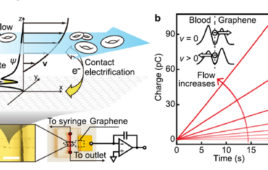 Solar and wind cannot match up to fossil fuels unless they run at a continuous pace. However, innovative batteries and storage technology could be a game-changer. Solar or wind power needs to be able to be economically stored and then released on command in order to overtake fossil fuels.
Solar and wind cannot match up to fossil fuels unless they run at a continuous pace. However, innovative batteries and storage technology could be a game-changer. Solar or wind power needs to be able to be economically stored and then released on command in order to overtake fossil fuels.
The CEO of Shell recently commented that replacing fossil fuels with renewables can only happen “step by step” — in the meantime, heavy industry, heavy duty transport, and chemical manufacturers will continue to require hydrocarbons to operate. Shell joined five of Europe’s largest oil and gas companies in urging the world’s governments to introduce a price on carbon emissions at the United Nations Paris climate conference in December, where governments will try to agree on a way to limit global warming.
According to Fortune, a 2013 estimate says that the economic impact of energy storage would be at least $90 billion a year by 2025, and possibly much more (upwards of $635 billion) depending on how fast it is applied to cars. This is a drop in the bucket that is the $6 trillion global energy market, but it is a drop that is getting bigger.
The same article notes that storage technologies are getting less expensive. The cost of large-format lithium-ion storage in 2007 was about $900 per kilowatt-hour; today it’s $380, and by 2020 the cost could dip under $200. Other promising technologies include supercapacitors, sodium-oxygen batteries, and graphene aerogels.
Small gold nanoclusters could also be used in short-term storage of energy or electric charge in molecular electronics. Additionally, the development of a more powerful lithium-oxygen battery has been called the “holy grail” of electrochemical energy storage.
A new hybrid silica sol-gel material has been used to develop a capacitor dielectric material which provides an electrical energy storage capacity that is just as good as certain batteries, with both a high energy density and high power density. Dielectric materials could offer a fast charge and discharge response, high levels of energy storage, and power conditioning for defense, medical, and commercial applications.
Meanwhile, researchers at Lawrence Livermore National Laboratory have identified found charge-induced changes in the structure and bonding of graphitic carbon electrodes. This discovery could have implications on future energy storage, and could improve the capacity and efficiency of electrical energy storage systems like batteries and supercapacitors. Applications include consumer, industrial, and green technologies.
Finally, researchers at Ohio State University have achieved a milestone with the world’s first solar battery (which features a solar cell and a battery in a single device). The battery offers a 20 percent energy savings — courtesy of sunlight captured by a solar panel on top of the battery — over traditional lithium-iodine batteries.




